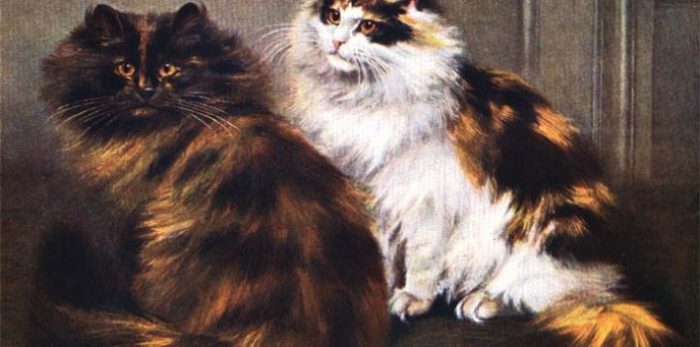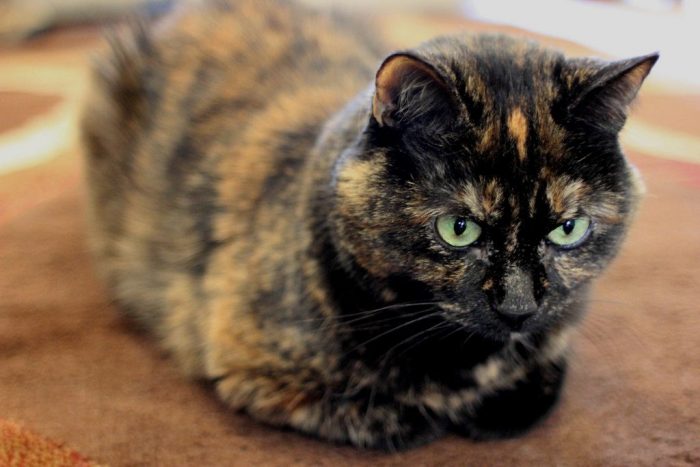Cats have been one of man’s most trusted companions for as long as we can remember, providing comfort, companionship, friendship, and even entertainment. Tortie, as the Tortoiseshell cat is fondly called for short, is sometimes called the “divas” of the cat world and the reasons are clear. They are sassy, temperamental, and fiercely loyal. These cats possess a distinctive multicolored fur that sets them apart from any other feline.
While research has it that the breed of a cat exerts more influence on its personality than the color, tortie owners continue to argue that this set of felines have a distinct personality/attitude which they refer to as ‘tortitude’. If you are in search of a cat that will keep you on your toes, you should definitely read this to the end.
Table of Contents
The Origin of the Tortoiseshell Cat
Tortoiseshell can occur in various breeds and they came into origin by simple genetics. The name “tortoiseshell” refers to this particular cat’s fur color and not the breed. This distinctive color can be found in a variety of breeds. Some of them include American Shorthair, Persian, Maine Coons, Cornish Rex, British Shorthair, and Ragamuffin. Moreover, both mixed and purebred can produce either a long or short tortoiseshell cat.
Key Information About Torties
While they may not belong to a particular breed, tortoiseshell cats do have some things they share in common and if you plan to own one, the information below might come in handy.
Temperament
Being headstrong is a common trait of most torties. They possess an endless amount of energy and can be very sensitive compared to other cats. Their strong attitude or tortitude is a popular trait among them. They are known and peculiar for their feistiness, independent nature, and strong will. Thus, if you are new in the business of owning pets, the tortoiseshell cat might not be such a good choice.
Grooming
The process of grooming is one essential part of pet parenting that should not be neglected. Like most other cats, Torties can come with long or short hair. This is dependent on their peculiar breed. Either way, It is very important to watch the condition of their skin and fur closely when grooming. Another way to keep their coat tangle-free, and silky smooth is to take their de-shedding procedures very seriously. Brushing them down regularly is the sure way to keep their fur healthy.
Health
As pointed out earlier Torties are not a particular breed so there is no universal health problem that can be associated with them. If you are worried about your tortie’s health, then it might be safer to find out what health challenge is peculiar to that breed. For example, if you own a tortoiseshell cat of the Persian breed, find out about problems peculiar to Persian cats. Generally, experts believe the most popular cat ailments involve their skin, kidneys, and mouth.
Feeding
Just like one will feed any other cat, it is important to feed the torties high-quality cat food with fewer table scraps. Feeding your tortie is also highly dependent on the particular breed as various cats can have specific nutritional requirements due to their needs at any stage in life.
Five Interesting Facts About the Tortoiseshell Cat
1. They are predominantly female
Due to the way their genes are arranged to produce their coat colors, having a male tortoiseshell cat is very rare and if they do occur, they are usually sterile. However, the occurrence of a male which is caused by a genetic mutation can occur in about one of three thousand tortoiseshell cats.
2. The name is not for peculiar a breed of cat
Their name is due to the coloring of their coats which look like the shell of a tortoise. The rare color combination makes these cats even more special. Several decades ago, tortoiseshells were highly prized materials used for manufacturing several things – from jewelry to furniture before it was banned.
3. Myths surrounding the tortoiseshell cat
There are lots of myths and legends surrounding the tortoiseshell cats that it’s somehow difficult to discern what to believe. They are believed to have psychic abilities and can see into the future. They are also believed to bring lots of good luck and money. They are called money cats in the U.S. According to the Japanese, their presence can ward off ghosts and evil spirits. In all, people believe there is more to the tortoiseshell cat than the eyes can see.
4. Coat peculiarities
A torties coat can be patched or bridled and it can also be mosaic or chimera. If the colors appear in large sections all over the body, then it is patched. If the colors appear to be woven together then it’s bridled. They are called mosaic if the color combination is randomly mixed and chimera if the color is divided on two sides of the face or throughout the body.
5. Life span
A tortie’s life span can vary because they belong to different breeds and can have peculiar issues depending on the breed. One of the world’s oldest torties (Marzipan) lived up to 21 years old. 21 is a long time, even for a cat with nine lives. However, an average cat’s lifespan is said to be 14 years and mixed breed cats even live longer.
Read Also: Cat Peeing Blood- 4 Reasons Why and things you must do
What Are The Differences Between Tortoiseshell and Calico Cats?

These two cats can belong to the same breed but their differences lie in their special color patterns.
Calico as a term is used to describe a patched coloration that includes white or tricolored cats. So a Calico cat can have a random pattern of orange, black, and white patches.
Tortoiseshell cats are mostly two-colored, predominantly black and red. The color is pronounced on some tabbies and varies on some. Some can be chocolate or grey instead of black while some can be yellow or cream instead of red. Overall, their coats have the same appearance as that of a tortoise.
Moreover, these variations aren’t set in stone as some tortoiseshell cats can have white patches. The whiteness can occur in their paws, tummies, or bibs. The difference between white patches in tortoiseshell and calico is that unlike the randomly scattered white areas in calicos, they are organized neatly and are caused by different genes.
